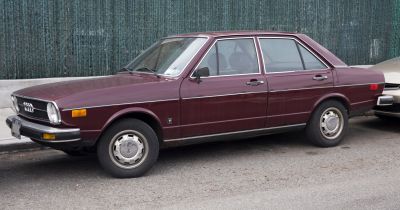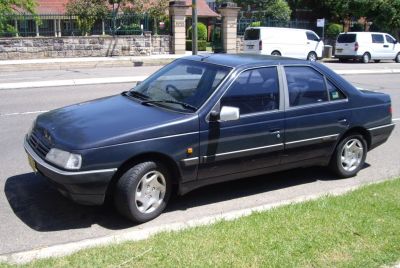 1992 Honda Domani Dimensions, Size & Specs
1992 Honda Domani Dimensions, Size & Specs
Measurements of the 1992 Honda Domani, engineered for optimal performance and comfort
| Dimensions | |
|---|---|
| Length: | 4415 mm173.8 in14.5 ft |
| Width: | 1695 mm66.7 in5.6 ft |
| Height: | 1390 mm54.7 in4.6 ft |
| Weight Specifications | |
| Curb Weight: | 1050-1090 kg2315-2403 lbs |
| Tire Specifications | |
| Tire Sizes: |
|
The Honda Domani sedan, produced from 1992 to 1996, represents a compact and efficient vehicle segment ideal for urban and suburban driving. With a length of 4415 mm (173.8 inches), a width of 1695 mm (66.7 inches), and a height of 1390 mm (54.7 inches), the Domani offers a balanced size that combines interior comfort with manageable exterior dimensions for easy parking and maneuvering.
Weighing between 1050 and 1090 kilograms (2315 to 2403 pounds), the Honda Domani maintains a lightweight profile that supports fuel efficiency and nimble handling. The sedan featured tire options primarily in the 175/65 R14 and 185/65 R14 H sizes, providing a smooth and stable ride tailored for everyday driving conditions.
The Domani's slightly elevated tone in design and build quality made it a favored choice in the early 1990s compact sedan market, offering practical space without compromising on driving dynamics. Its dimensions are similar to other vehicles in its class during that era, making it a relevant comparison point for enthusiasts and buyers interested in compact sedans from the 1990s period.
Overall, the Honda Domani from the 1992-1996 generation is a well-sized sedan that balances compact exterior proportions with interior usability, backed by Honda's reputation for reliability and engineering. It is particularly notable for its light curb weight and tire options suited to provide both comfort and control.
Discover the standout features that make the 1992 Honda Domani a leader in its class
Have a question? Please check our knowledgebase first.
The 1992-1996 Honda Domani sedan has a length of 4415 mm (173.8 inches), a width of 1695 mm (66.7 inches), and a height of 1390 mm (54.7 inches). These compact dimensions provide a balanced profile that suits urban driving while maintaining interior comfort. The car's relatively modest width ensures easier maneuverability and parking in tight spaces. The height contributes to a low center of gravity, enhancing driving stability and aerodynamics. These dimensions place the Honda Domani in the compact sedan category, appealing to those seeking a practical yet stylish vehicle in daily use.
The curb weight of the 1992-1996 Honda Domani ranges between 1050 kg to 1090 kg (2315 to 2403 lbs). This relatively lightweight design facilitates improved fuel efficiency and nimble handling characteristics, making it an economical and enjoyable drive. The variation in curb weight may depend on factors such as trim level, equipment options, and regional specifications. The lighter weight combined with compact dimensions supports agile maneuvering in city environments as well as stable highway cruising. This weight range helps the Domani maintain a good balance between performance and efficiency.
Yes, the Honda Domani from 1992 to 1996 comfortably fits into a standard residential garage. With exterior dimensions of 4415 mm (173.8 inches) in length, 1695 mm (66.7 inches) in width, and a height of 1390 mm (54.7 inches), it is smaller than many modern sedans and SUVs. Most standard garages are approximately 2.4 to 2.7 meters (8 to 9 feet) wide and 5.5 to 6 meters (18 to 20 feet) deep, providing ample space for the Domani with clearance for opening doors and maneuvering around the vehicle. Its modest size helps owners park without difficulty, protecting the car from weather and potential damage.
The 1992-1996 Honda Domani’s width of 1695 mm (66.7 inches) reflects its compact sedan classification, which balances exterior compactness with interior roominess. While not as wide as larger sedans, this width allows for comfortable seating for four to five passengers, with adequate shoulder room for front and rear occupants. Though space may be cozier compared to midsize vehicles, Honda’s efficient interior packaging optimizes legroom and headroom within these constraints. The narrower width also benefits city driving by enabling easier navigation through congested streets and parking spaces, without severely compromising passenger comfort.
The original tire sizes for the 1992-1996 Honda Domani sedans were primarily 175/65 R14, 175/65 R14 H, and 185/65 R14 H. These 14-inch tires with relatively narrow widths support efficient fuel consumption and nimble handling. The 175 mm (6.9 inch) and 185 mm (7.3 inch) widths provide a good balance between grip and rolling resistance. The 'H' speed rating indicates the tires are rated for speeds up to 210 km/h (130 mph), which exceeds typical usage for this vehicle class, ensuring safe and confident driving experiences. These tires complement the Domani’s lightweight design and compact size for an overall well-rounded driving dynamic.
With a height of 1390 mm (54.7 inches), the 1992-1996 Honda Domani sits lower than many contemporary sedans, contributing to a low center of gravity. This benefits driving dynamics by enhancing stability during cornering and reducing body roll. The lowered stance also improves aerodynamic efficiency, which can lead to modest fuel economy gains and reduced wind noise at speed. From a design perspective, the relatively low height gives the car a sleek and sporty profile while still providing adequate headroom for occupants. This height balances aesthetics, comfort, and performance within the compact sedan segment.
The 1992-1996 Honda Domani retained a compact sedan footprint similar to its predecessor, but with some refinements in dimensions and design. While the exact predecessor dimensions vary depending on market and specific model, the second-generation Domani generally featured a slightly longer length and more modern styling compared to earlier versions, enhancing passenger space and exterior sophistication. The overall width and height remained within compact sedan norms to maintain maneuverability and fuel efficiency. These modest dimensional adjustments improved occupant comfort and practicality without sacrificing the agile driving experience expected from this vehicle category.
Compared to other compact sedans from the early to mid-1990s, the Honda Domani’s size and weight are quite typical. Its length of 4415 mm (173.8 inches) and width of 1695 mm (66.7 inches) align closely with competitors like the Toyota Corolla and Nissan Sunny of that period, which were also designed to balance compact dimensions with reasonable interior space. The Domani’s curb weight between 1050 and 1090 kg (2315 to 2403 lbs) is on the lighter end, which contributes to its fuel efficiency and nimble handling. This comparably lightweight and appropriately sized profile helped the Domani compete effectively in the compact sedan market segment.
The curb weight of the 1992-1996 Honda Domani, falling between 1050 kg and 1090 kg (2315 to 2403 lbs), offers several advantages for everyday driving. A lighter vehicle tends to accelerate more responsively, consume less fuel, and handle more agilely than heavier counterparts. The Domani’s relatively low weight helps it achieve better mileage, making it cost-effective for daily commuting. It also contributes to lower wear and tear on brakes and tires due to reduced mass. Additionally, the lighter curb weight improves braking performance and cornering stability, enhancing overall safety and driving confidence in a variety of traffic conditions.
The 1992-1996 Honda Domani gained popularity among compact sedan buyers due to its well-rounded package of compact size, efficient performance, and practical design. Its manageable dimensions make it ideal for urban environments where parking and tight streets are common. The combination of lightweight construction and reliable Honda engineering results in good fuel economy and dependable daily use. Comfortable seating for four to five passengers and well-thought-out interior space maximize usability despite its compact exterior. Additionally, the Domani offers a blend of nimble handling, modest running costs, and durable build quality, making it a favored choice for budget-conscious buyers seeking reliability.
Discover similar sized cars.

| Production: | 1990-1997 |
|---|---|
| Model Year: | 1990 |
| Length: | 4400-4430 mm173.2-174.4 in |
| Width: | 1700-1715 mm66.9-67.5 in |
| Height: | 1390-1410 mm54.7-55.5 in |

| Production: | 2003-2006 |
|---|---|
| Model Year: | 2003 |
| Length: | 4435 mm174.6 in |
| Width: | 1745 mm68.7 in |
| Height: | 1430 mm56.3 in |

| Production: | 1992-1993 |
|---|---|
| Model Year: | 1992 |
| Length: | 4325 mm170.3 in |
| Width: | 1645 mm64.8 in |
| Height: | 1370 mm53.9 in |

| Production: | 1998-2005 |
|---|---|
| Model Year: | 1998 |
| Length: | 4400 mm173.2 in |
| Width: | 1720 mm67.7 in |
| Height: | 1410 mm55.5 in |

| Production: | 1986-1991 |
|---|---|
| Model Year: | 1986 |
| Length: | 4393 mm173.0 in |
| Width: | 1695 mm66.7 in |
| Height: | 1397 mm55.0 in |

| Production: | 1973-1979 |
|---|---|
| Model Year: | 1973 |
| Length: | 4369 mm172.0 in |
| Width: | 1643 mm64.7 in |
| Height: | 1361 mm53.6 in |

| Production: | 1999-2005 |
|---|---|
| Model Year: | 1999 |
| Length: | 4466 mm175.8 in |
| Width: | 1743 mm68.6 in |
| Height: | 1462 mm57.6 in |

| Production: | 1992-1996 |
|---|---|
| Model Year: | 1992 |
| Length: | 4408 mm173.5 in |
| Width: | 1694-1714 mm66.7-67.5 in |
| Height: | 1390-1406 mm54.7-55.4 in |
